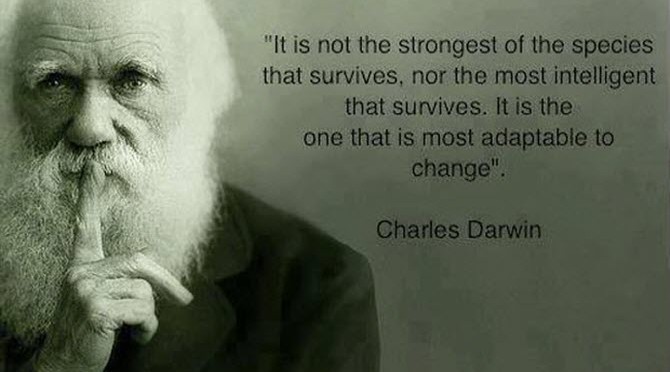Darwin understood that improvement emerges from being adaptable to the environment. How we respond to our environment is what determines success, and not much else.
Why do some embrace change more readily than others? Why do some resist experimenting with ideas and concepts that might well improve their lot in life, while others seem to “bounce back” time after time and end up achieving that which many thought impossible for “someone who made so many mistakes in life?”
Mindset…
Mindset determines how you will interact with the world around you. Your mindset determines things like: your attitude, your goals, how you react to failure, why you might avoid success, how you formulate strategy and tactics, and how you react to your own success and the success of others.
Research suggest there are two basic mindsets: Fixed and Flexible.
Fixed
- Belief that ability is fixed, static, predetermined (genetic),
- The goal of an endeavor is to succeed such that you look good,
- Avoid tough challenges because failure defines your self-perception,
- Effort is required by those who don’t have the talent to do it in the first place, and
- The response to obstacles and challenges is helplessness – it is what it is.
These individuals tend to judge situations and others based on little to no objective information, and tend to rely on stereotypes.
Flexible (or Agile)
- Belief that ability can develop and improve if exercised,
- The goal of an endeavor is to learn,
- Embrace challenges because failure helps you grow,
- Effort is the path to Mastery and Autonomy, and
- The response to obstacles and challenges is resilience.
There individuals tend to make up their own minds over some reasonable period of time based on observation and objective information, and are less negative and positive about the situation or persons involved.
Organizations have a mindset! The organizations you want to work for have ones like these…
“…to make mistakes and struggle, but eventually we may do something that we’ll remember the rest of our lives.” — Scott Forstall, Apple Sr. VP
“…Amazon’s strategy is like planting seeds, or going down blind alleys.” — Jeff Bezos, CEO, Amazon
“…we like our people to fail early and often.” — David Kelly, IDEO CEO
The Agile Mindset
The Agile Mindset is something very obvious when you understand it. It is that which you understood from reading above. It is:
- Fail Early and Fail Often,
- Learn continuously to little experiments,
- Failure is an option, otherwise you won’t learn very much, and
- To improve is to change, to be perfect is to change often (Winston Churchill)
Everyone has the ability to change their mindset, but like any epiphany, it takes some effort and an a priori decision to suspend disbelief. One can predispose themselves to this by reading books, attending various training classes and seminars. But, the single most effective mechanism to transition your mindset is to simply be flexible – to become agile in your thinking – by practicing Agility.
The remainder of the content is devoted to providing information, workshops, exercises, and training content that will help you to become “Agile.”
Velocity
 Velocity is… _________________________________________________________________ – Civilization exists by geological consent, subject to change without notice. -Read More...
Velocity is… _________________________________________________________________ – Civilization exists by geological consent, subject to change without notice. -Read More...